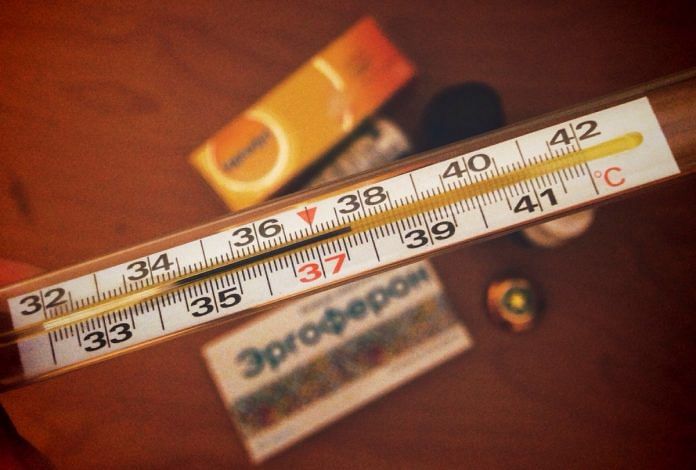Reporting science has become more mainstream in media around the world and India is also catching up quickly. But latest scientific research is published in a variety of journals, making it hard for readers to keep track. What’s harder is understanding the crux of a scientific finding with the relevant context and without misinterpretation. We at ThePrint focus on covering science news in India, but want our readers to be updated on the latest global findings as well.
ScientiFix, our new weekly feature, will offer you a summary of the top global science stories of the week, with links to the best sources to read them. It’s your fix to stay on top of the latest in science.
98.6º is probably not the normal human body temperature at all
Have you ever felt like you had a fever, but the thermometer showed your temperature was fine? Well, maybe you had a fever after all. Standard body temperature varies among humans and the original study that concluded 98.6ºF as the normal temperature was flawed. Read the Wired story here.
Trusty Opportunity rover given a 45-day deadline
NASA’s Opportunity rover, which shut down in June after a Martian global dust storm covered its solar panels, has now been given a 45-day deadline to “wake up”. The rover, which had an expected lifespan of three months, has ended up working on Mars for 15 years.
NASA has been actively trying to revive the rover, but says now it will abandon the efforts after the deadline. The news has not been received well by planetary scientists and on social media due to the hardy rover’s immense capabilities. And here’s a piece from The Verge that puts this statement in more context and explains what’s going on.
Mysterious new neuron discovered in the human brain
Scientists have discovered a brand new neuron in our brains, and we have no idea what it does. What’s more, it seems to be unique to humans. This means that our traditional genetic cousins — rats and mice — cannot be used to find out what it does. It looks like a rose after the petals have fallen off, and is thus called “the rose hip cell”. Here’s an NPR story on the finding.
Naked mole-rat queens rule their flock through poop
The naked mole-rat species is resistant to cancer, doesn’t feel pain, can survive for over 15 minutes without oxygen, is very social, and lives really long. They also eat a lot of poop for gut bacteria and necessary hormones. It turns out, the queen of each pack also breeds obedience through hormones in her poop – when her subordinates eat her poop, they get “wired” to take care of her offspring. Here’s a fun story about it from The Atlantic.
Gene-editing in dogs offers hope for patients of deadly disorder
Duchenne muscular dystrophy (DMD) is a genetic disorder that makes humans and animals susceptible to progressive muscle degeneration and weakness.
Most people who own golden retrievers eventually have to come to terms with their dog not being allowed to jump and run. In humans, the genetic defect starts showing itself from the age of four and reduces the life of an affected person (just males) to barely 30 years.
Scientists have now used gene-editing with CRISPR to cure dogs of DMD. Are humans next? Read this article by Science to know more.
Pictures: Perfectly preserved ancient baby horse found in Siberia
A perfectly preserved two-month-old foal with intact skin and hair, estimated to be 30,000 to 40,000 years old, has been found in the Siberian permafrost. The horse belonged to a now-extinct equine species and was found in a crater that formed as rising temperatures thawed ice and caused it to collapse into a pit. Read the Siberian Times report that is full of detailed pictures.







Likewise, 120/80 as normal BP is flawed. It can vary depending on many factors: age, time of the day, the climate in which you live, etc. In fact, I remember reading that 140/90 should be considered normal for Indians. But there is a vested interest in keeping the lower figures. More patients, you see!
G.Sankaran
98.6 (degree) C(elsius)? It is F.